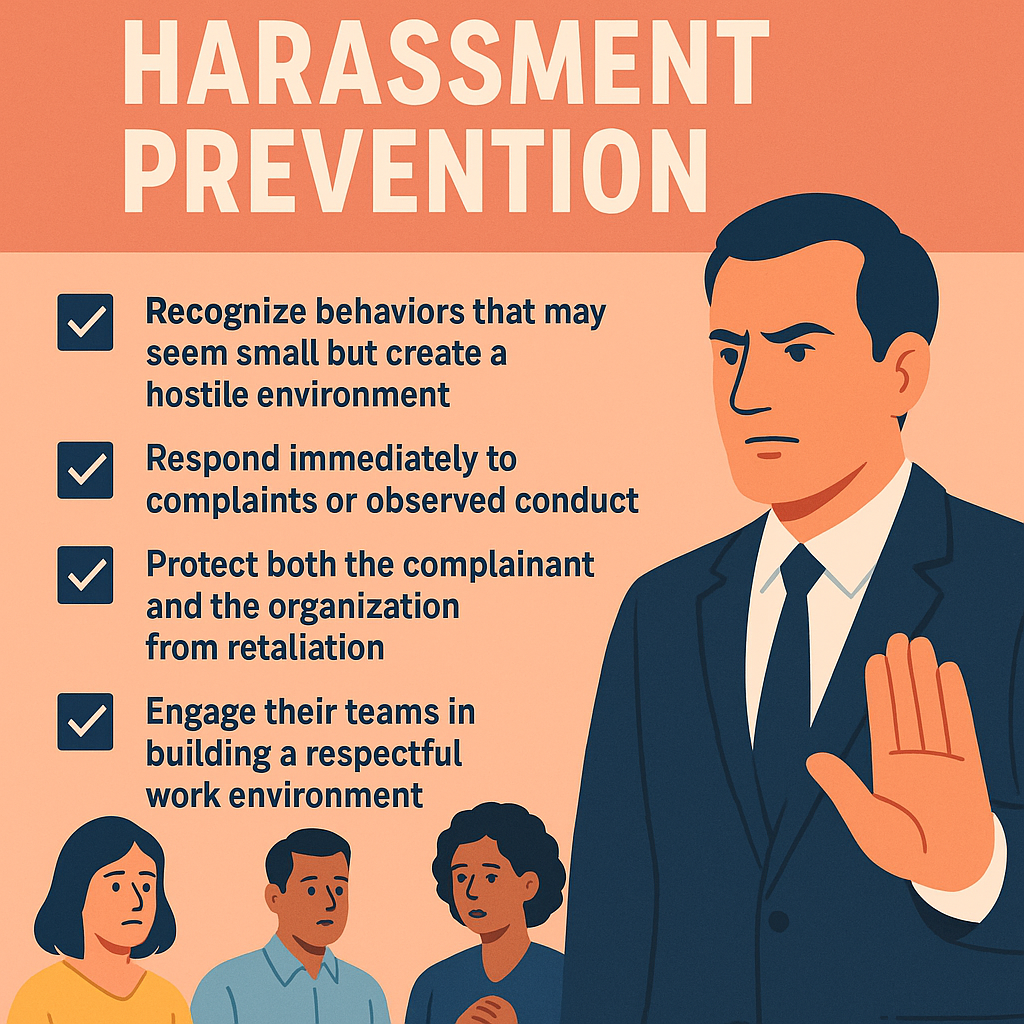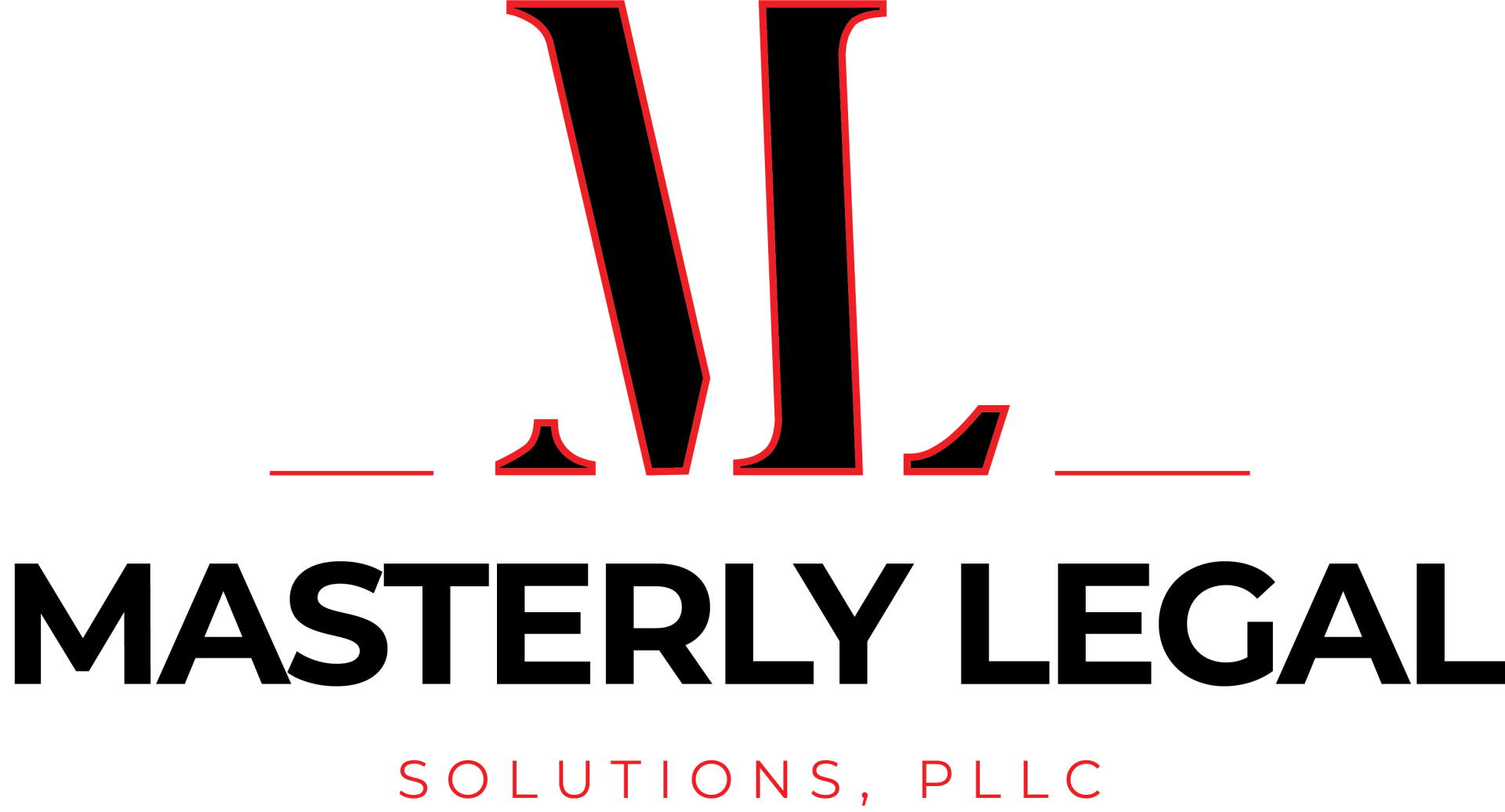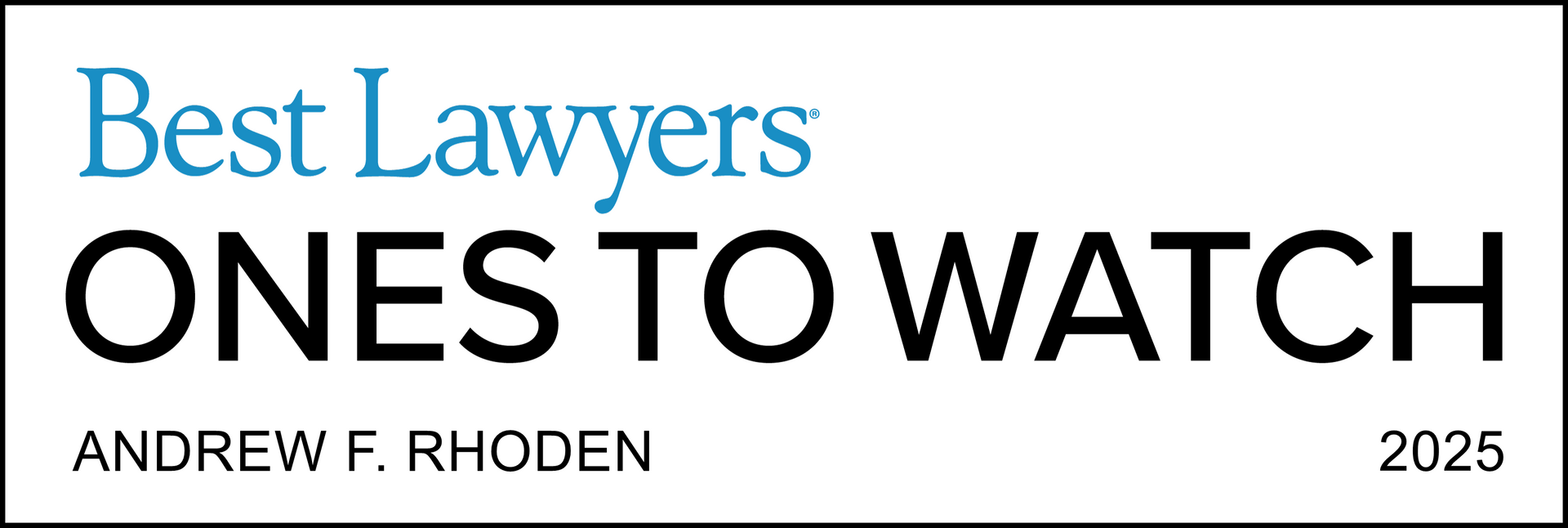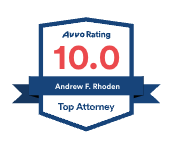Beyond HR: The Legal Role of Managers in Preventing Sexual Harassment
The Expanding Role of Managers in Harassment Prevention
When most people think of workplace harassment, they assume it is the responsibility of Human Resources to manage and resolve. While HR plays a crucial role, the law increasingly recognizes that managers and supervisors carry direct responsibilities in preventing harassment in the workplace. Their authority over employees means that how they act—or fail to act—can determine whether a workplace remains safe and compliant.
Managers are often the first to observe inappropriate behavior, overhear offensive jokes, or receive complaints from team members. Ignoring these warning signs creates risk not only for the organization but also for the manager personally. Courts and regulators expect managers to respond quickly, consistently, and lawfully when harassment occurs.
Why Sexual Harassment Training for Managers Matters
While all employees benefit from workplace harassment training, sexual harassment training for managers is critical because managers must act as the first line of defense. This specialized training goes beyond the basics of what is unlawful harassment to focus on responsibilities, reporting procedures, and how to recognize early incidents.
Through sexual harassment training, managers learn how to:
- Recognize behaviors that may seem small but create a hostile environment.
- Respond immediately to complaints or observed conduct.
- Protect both the complainant and the organization from retaliation.
- Engage their teams in building a respectful work environment.
Failure to participate in or apply this training can expose employers to liability, especially if managers fail to act when they should.
Understanding the Legal Expectations of Supervisors
Federal and state law place heightened expectations on supervisors. In fact, if a manager is aware of harassment in the workplace and does nothing, that knowledge can legally be imputed to the company. This is why courts often scrutinize supervisors and not just HR departments.
Managers must:
- Report harassment quickly and follow proper forms or protocols.
- Comply with sexual harassment prevention policy requirements.
- Address instances of workplace harassment immediately.
- Preventing harassment through consistent enforcement of rules.
By reinforcing these key concepts, organizations ensure that both managers and non supervisors understand their roles in maintaining compliance.
Workplace Harassment Training Beyond Basics
Most organizations now provide some form of workplace harassment training course, but not all courses meet the higher expectations placed on managers. A legally sound workplace harassment prevention training program for supervisors must be interactive, engaging, and up to date with federal and state law.
High-quality training content covers:
- Sexual harassment prevention training for both new employees and existing staff.
- Clear explanations of sexual harassment prevention policy requirements.
- Practical scenarios to help learners recognize subtle forms of misconduct.
- Guidance on how to respond to incidents effectively.
The Role of Harassment Prevention Training in Workplace Culture
A strong workplace culture is one where harassment prevention is taken seriously. Managers must model respect and set expectations for all employees. By doing so, they encourage non supervisory employees to speak up without fear.
Elements of an effective harassment training program include:
- Harassment prevention training for supervisors and non supervisors alike.
- Annual training updates to keep information up to date.
- Opportunities to engage in discussions about ethics and conflict resolution.
- Tools to help employees recognize and report problems early.
When organizations create an inclusive workplace, employee morale improves, and the organization is better protected from legal exposure.
Legal Requirements Across States
Many states, including California and New York City employers, mandate annual training or specific workplace harassment prevention training requirements. Some even require bystander intervention training to further strengthen workplace accountability.
Other states are adopting similar workplace training requirements, and employers with one or more employees must ensure compliance. To meet federal standards and avoid penalties, managers must ensure that the training content provided to employees is consistent and well-documented.
Failing to comply with these state mandates exposes employers to lawsuits, fines, and reputational harm.
Preventing Harassment Through Practical Application
Knowledge without action is ineffective. To truly prevent sexual harassment, managers must demonstrate leadership in applying what they learn. This includes reinforcing compliance training, recognizing warning signs, and responding to misconduct immediately.
Practical strategies for preventing harassment include:
- Holding workplace harassment training refreshers for new employees.
- Requiring harassment training participation from all employees annually.
- Using online training modules for accessibility on a mobile device.
- Providing technical support to ensure all learners can access the course.
These measures create a respectful and safer workplace while helping employers comply with federal and state law.
Addressing Harassment in the Workplace: Manager Responsibilities
When harassment in the workplace occurs, managers must respond quickly and decisively. Ignoring offensive jokes, bullying, or intimidation sends a signal that misconduct is tolerated.
Effective managerial actions include:
- Taking all complaints seriously and filing appropriate forms.
- Following the sexual harassment prevention policy consistently.
- Offering additional information about how to report and handle issues.
- Supporting employees through the process to ensure a fair outcome.
By addressing problems early, managers protect their organization and build trust with their teams.
Building Skills Through Training Courses
Comprehensive harassment prevention training equips managers with the skills needed to engage their teams, handle complaints, and foster a respectful environment. These courses often include role-playing exercises, scenario-based discussions, and training content tailored to industry-specific risks.
Through workplace harassment training courses, managers learn how to:
- Recognize early signs of misconduct.
- Respond appropriately to protect the complainant.
- Create a safe and respectful work environment for all.
Such training is not just about legal compliance—it is about building a stronger, healthier organization.

Strengthening Compliance by Addressing Workplace Harassment
To truly reduce liability and protect employees, managers must actively address workplace harassment rather than waiting for HR to intervene. Many organizations now incorporate inclusion training alongside harassment prevention programs to ensure that every employee feels respected and valued. These programs are often scheduled with a clear start date and reinforced through annual training updates so managers and staff remain fully aware of their obligations. By tackling issues of discrimination directly, managers not only comply with the law but also foster a culture of fairness that builds trust and accountability across the workplace.
Expanding Training Options for Stronger Prevention
Modern organizations recognize that sexual harassment prevention training must go beyond the HR department and extend to all levels of management. Companies are now using online training platforms to deliver flexible and accessible instruction that managers and employees can complete on a mobile device. In addition to core compliance training, many employers are also adopting bystander intervention training to empower workers to step in and stop misconduct before it escalates. This approach strengthens sexual harassment prevention efforts by giving supervisors and staff the tools to recognize and act on early warning signs. For organizations seeking to build more effective programs, consulting with legal professionals can provide additional information to ensure training meets both federal standards and state-specific mandates.
Contact Masterly Legal Solutions
If you are a business owner, HR leader, or manager looking to strengthen your defense against workplace harassment, we can help. At Masterly Legal Solutions, we provide guidance, resources, and legal insight into sexual harassment training for managers and comprehensive workplace harassment prevention training.
We invite you to contact us for a free consultation so we can answer your questions and guide you in developing a strategy that protects your organization and your employees. Whether you need help evaluating your training content, updating your sexual harassment prevention policy, or ensuring your courses meet legal standards, we are here to support you.
Contact us at (972) 236-5051 today to discuss how we can help with sexual harassment training and prevention programs tailored for managers.
Notice: This post is not legal advice; it is merely informational in nature. Seek advice from an attorney for advice tailored to your circumstances.
Looking for Legal & Business Solutions? Contact Us Now
Fill in the form or call us to set up a meeting














